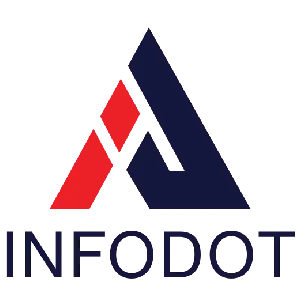Introduction
Launching a startup often pushes technology management into the background—but ignoring IT asset inventory from Day One can lead to chaos. Without visibility into your hardware, software, and cloud assets, you risk compliance gaps, wasted spend, and security lapses. The best-performing startups view asset management not as a chore, but as a strategic advantage: turning every device, license, and cloud resource into a controllable asset, not a liability.
Imagine scaling to 50 employees with no central inventory. Suddenly, duplicates, outdated licenses, and untracked cloud spend appear. Vulnerabilities slip through patches, and audits reveal costly compliance violations. The financial impact is real: on average, organizations that adopt centralized IT asset inventory save up to 30% per asset in the first year alone, while reclaiming nearly 20-30% of unused IT budget.
This guide unpacks how to craft a centralized IT inventory system from the very start—covering the what, why, how, and who. Each step is informed by IT business best practices (ITIL, NIST) and real-world experience, including success stories of startups that avoided costly mistakes by getting IT asset management right.
What Is IT Asset Management (ITAM)?
ITAM is the coordinated practice of managing all IT assets—across hardware, software, and cloud—throughout their lifecycle. It includes procurement, record-keeping, compliance, performance, and retirement, ensuring each asset is accounted for, optimized, and compliant.
- Centralized recording of devices and software
- Lifecycle tracking from acquisition to disposal
- License usage monitoring
- Integration with incident/change management
- Budget and procurement forecasting
- Endpoint compliance and security checks
Why Do Businesses Invest in IT Systems?
Startups invest heavily in IT systems to support operations, growth, and innovation. Facilities cost, risk, and complexity can spiral without an inventory system to manage allocation, licensing, and compliance. Studies show that 20–30% of IT budgets are lost to untracked or unused assets—highlighting why early investment in ITAM drives efficiency and transparency.
Why IT Asset Inventory Management Is Important
A centralized inventory eliminates asset blind spots. You instantly know what’s in use, what’s underutilized, and where vulnerabilities lie. Such systems not only improve cost control, but also enable audit readiness, risk reduction, and stronger strategic planning.
- Track device location and status
- Monitor software license usage
- View warranty and contract expiry
- Support incident and change processes
- Enhance security through visibility
- Enable automatic discovery across environments
Types of IT Assets
IT assets encompass a mix of physical and virtual resources your startup uses to operate, build, and innovate.
- Physical hardware: laptops, servers, routers
- Software licenses, SaaS subscriptions
- VMs, containers, and cloud-based services
- Network services and IP blocks
- IoT and edge devices
- Digital assets like SSL certificates
Implementing a Centralized IT Asset Inventory System from Day One
Building a centralized IT asset inventory system from the start is essential for startups aiming to scale efficiently. It creates a single source of truth for all hardware and software assets—ensuring better visibility, security, and control. Begin by selecting a reliable IT asset management (ITAM) tool that supports real-time tracking, user assignment, and lifecycle management. Record key details such as serial numbers, purchase dates, warranty information, and assigned users for every asset.
Establish standardized protocols for adding, updating, and retiring assets in the system. Assign access rights to relevant team members and automate alerts for renewals, maintenance, or returns. Integrating your inventory with HR and IT support systems further streamlines onboarding and offboarding processes.
Starting early with a centralized system reduces the risk of lost or untracked assets, simplifies audits, and improves budget forecasting. It lays the groundwork for secure, scalable, and accountable IT operations as your team grows.
Benefits of ITAM Processes to Your IT Team
Implementing ITAM practices dramatically boosts efficiency, security, and financial control—especially for smaller teams.
- Cuts duplicated software by reclaiming licenses
- Reduces asset-related helpdesk tickets
- Provides lifecycle and refresh planning
- Enhances security patch coverage
- Improves SLA and incident response
- Frees team time from manual tracking
How to Build a More Efficient IT Environment
Efficient environments aren’t accidental—they’re planned via ITAM. Start by defining asset scope, automating discovery, and embedding inventory into IT lifecycles (incidents, procurement, support). Prioritize visibility and prepare to scale, avoiding fragmented tracking that slows operations and introduces risk. These steps also align well with IT Infrastructure Managed Services frameworks that boost operational readiness.
How to Build a Centralized IT Asset Inventory
Centralized inventory represents a single source of truth for your IT infrastructure. To implement:
- Conduct asset discovery
- Define metadata schemas
- Tag assets
- Integrate agent-based and network discovery
- Connect the inventory to IT Service Management and procurement
- Automate tracking and alerts
IT Asset Management in a Single Platform
Central platforms enable unified lifecycle and compliance visibility. Features include real-time updates, audit logs, reporting dashboards, license expiry, and cloud cost tracking—all in one interface.
- Auto-discovery across environments
- Asset tagging and standardized fields
- Integration with CMDB and helpdesk
- Compliance alerts for licenses/warranties
- Reporting for finance and ops
- Role-based access and audit logs
Components of IT Asset Inventory Management
A robust system includes processes, tools, and governance.
- Asset definition policy / scope
- Discovery: agent & network scanning
- Tagging: QR/barcode labeling
- CMDB or database backend
- Helpdesk and procurement integration
- Reporting, alerts, lifecycle stages
Lifecycle Automation Workflows
Facilitate automatic transitions from acquisition to retirement: asset creation, assignment, maintenance, and disposal. Triggers handle updates to CMDB and cost systems.
- Auto-create purchase records
- Assign owner upon deployment
- Remind before warranty expiration
- Flag end-of-life assets
- Integrate with disposal policy
- Update CMDB and finance dashboards
Compliance and Audit Management
Maintain readiness for internal or external audits with licensing, patch, and device usage compliance tracking.
- Compile license compliance reports
- Schedule regular audits
- Generate audit-ready files
- Tag and archive retired assets
- Log change and access histories
- Provide proof during financial/gov audits
Cloud and SaaS Inventory
Include cloud resources and subscriptions in your IT inventory for cost and compliance control.
- Discover VMs via APIs
- Scan SaaS subscriptions
- Tag cloud assets with owner details
- Track cloud usage metrics
- Link budgets and cost alerts
- Support cloud rightsizing decisions
Vendor and Contract Management
Record vendor terms and pricing alongside assets. This enables negotiating renewal terms and tracking SLA adherence.
- Link devices to purchase orders
- Track contract start and expiry
- Map vendors to asset groups
- Log SLA breaches
- Review vendor spend
- Alert for renegotiation timeframe
Why Choose Infodot for IT Asset Inventory
Infodot offers a fully integrated ITAM platform, combining discovery, inventory, compliance monitoring, and lifecycle workflows. With automation and expert support, Infodot helps startups eliminate manual drudgery, free up 20+ hours monthly, and reduce IT asset costs by 20–30%. From a governed CMDB to audit-ready reporting, Infodot provides visibility and control so leaders can scale confidently using MSP Best Practices.
Real-World Example 1
A biotech startup with 40 employees lacked any central inventory system. Each department used spreadsheets; cloud costs ballooned without visibility, and audits revealed expired software licenses. They faced an $18,000 compliance fine and unplanned budget variance.
After engaging Infodot, they deployed an automated asset inventory solution covering laptops, SaaS subscriptions, and cloud instances. Within three months, they reclaimed underused licenses—saving 25% on software renewals. Device logs helped auditors locate 98% of assets within seconds. Cloud tagging enabled rightsizing, cutting monthly spend by 15%. As a result, annual IT OPEX dropped by over $35,000. Their finance leader praised Infodot: “We finally saw the true state of our tech, without guesswork.”
Real-World Example 2
A fintech startup scaling from 10 to 100 employees lacked inventory controls. Patch failures led to a ransomware incident—systems were vulnerable and untracked. Recovery costs hit $70K and delayed product launch by three weeks.
Infodot implemented continuous discovery agents on endpoints, integrated inventory with patch management, and enabled real-time dashboards for unpatched devices. Automated alerts prompted fixes within 24 hours, eliminating missed updates. Lifecycle tracking enabled systematic replacement of aging hardware. Within six months, vulnerability incidents dropped 90%, and compliance readiness improved dramatically. CTO commented: “Thanks to Infodot, we went from reactive scrambles to proactive confidence—IT became a growth enabler.” They also laid the foundation for future IT Migration Services without unnecessary risks.
Conclusion
Building a centralized IT asset inventory system from Day One is not a luxury—it’s a strategic foundation for scale, security, and efficiency. With tight budgets and high metrics pressure, startups can’t afford the blind spots: untracked assets, undiscovered vulnerabilities, wasted spend, and compliance fines.
But startups that invest early gain outsized returns: 30% savings per asset, visibility to reclaim unused licenses, tight patch compliance, and the agility to scale fast without risk. Infodot’s solution combines automated discovery, lifecycle workflows, CMDB integration, and expert support—all curated to startup needs.
By adopting IT Asset Inventory Management early, leadership secures a future-ready infrastructure, eliminates distractions, and builds credibility with investors and regulators. As you scale, your tech environment shouldn’t be a burden—it should be an accelerator. With Infodot, this starts on Day One.
FAQs
- How implement an asset management system?
Start with asset definition, choose a platform, import basic data, then expand discovery and tagging protocols. - How to create an IT asset inventory?
Use automated discovery agents, barcode-tag devices, QA records, and maintain metadata centrally. - What is IT asset inventory process?
Define scope, discover assets, tag and record, integrate data, audit regularly, and retire when obsolete. - What is IT asset management workflow?
It spans planning→procurement→deployment→maintenance→retirement, with continuous visibility and compliance tracking. - What is an IT asset in ITIL?
Anything of value to IT services—hardware, software, licenses, cloud, and related contracts. - Main steps for asset management plan?
Scope assets, select tools, define roles, tag assets, integrate processes, and conduct reviews. - Why automated discovery matters?
It ensures accuracy, minimizes manual errors, and surfaces unknown or rogue devices. - How often audit inventory?
Quarterly or bi-annually, depending on scale and compliance requirements. - Who should own ITAM?
ITAM typically reports to IT operations or CISO, with visibility to finance and compliance. - How to tag assets effectively?
Use persistent QR/barcodes, include metadata, and integrate scans with inventory system at deployment. - Should you track cloud assets?
Yes – to manage cost, security, and license compliance across dynamic environments. - How to avoid asset sprawl?
Use automated discovery, periodic cleanups, and enforce disposal policies. - What platform should startups choose?
Select scalable cloud-based ITAM with CMDB, discovery, and workflow integration (e.g., Infodot). - Is spreadsheets OK initially?
Only for prototyping; reliable scaling demands a dynamic tool with automation. - What’s CMDB used for?
To map relationships between assets, applications, users, and services. - How to reconcile asset audit mismatches?
Investigate missing items, update records, tag new ones, and confirm with scan. - What data to collect per asset?
Serials, owner, location, purchase/expiry dates, warranty, OS, software, cloud affiliation. - How ensure license compliance?
Track installations vs. entitlements; flag surplus and renew on schedule. - Can non-IT assets be included?
Yes – company-owned phones, desks, accessories, and IoT can be inventoried too. - Benefits of early ITAM adoption?
Fewer surprises, developer confidence, investor trust, faster scaling. - What is meta-inventory?
Aggregating data from multiple IT systems—cloud, endpoint, network—into one source. - How secure the inventory database?
Use role-based access, audit logs, encryption at rest and transit. - How measure ITAM ROI?
Track asset cost savings, incident reduction, license reclaim, and audit readiness. - What is asset lifecycle policy?
Defines timelines, refresh intervals, support, and disposal processes for each asset type. - How avoid orphaned IT assets?
Periodic automated scans and reconciliation flag inactive or unassigned devices. - How integrate ITAM with procurement?
Use purchase workflows to create records and auto-tag receipts to inventory. - What KPIs track for ITAM?
Asset accuracy, audit pass rate, license usage efficiency, lifecycle adherence, compliance gaps. - Should ITAM include mobile devices?
Absolutely—for security, inventory, cost, and support readiness. - What is SaaS asset management?
Tracking subscription details, users, spend, and renewal dates for cloud software. - When scale ITAM tools?
When asset count exceeds 100 or cloud usage becomes complex.





